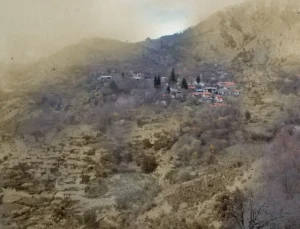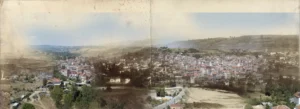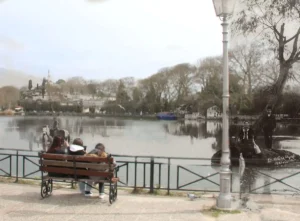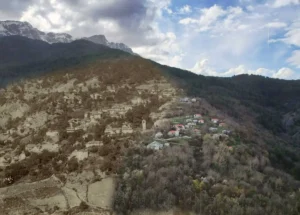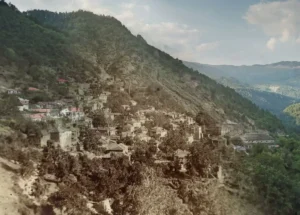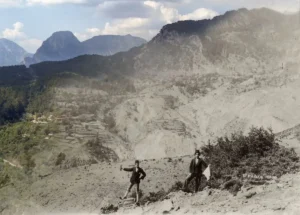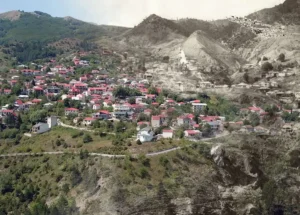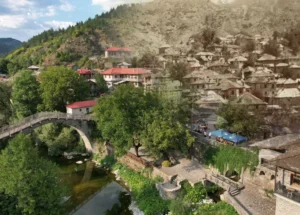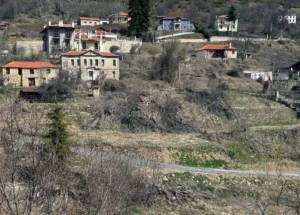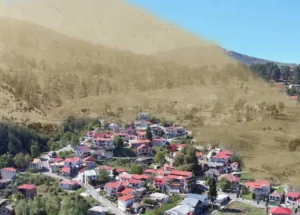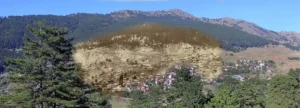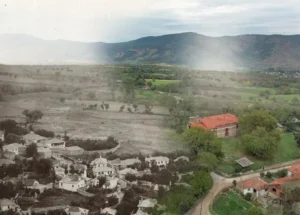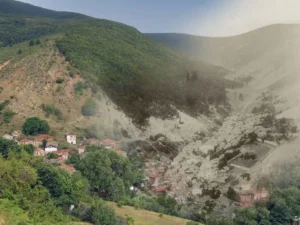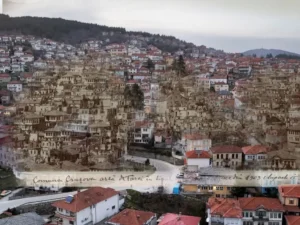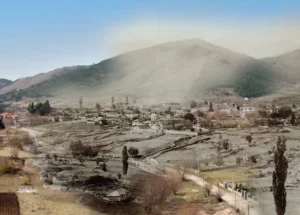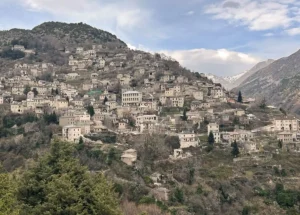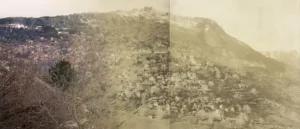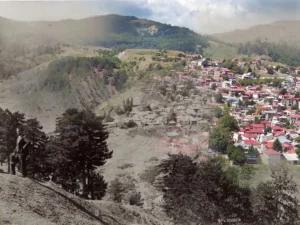Some places stubbornly resist being photographed. But I was stubborn too.I first arrived in Turia – Krania, in Greek – in 2017, but I only roughly identified the spot in the Manakia brothers’ photograph. The line of this landscape did not appear to have the same alignment as that of the original image, with the church spires. In 2019, when I arrived in the evening, the light was contre-jour. The elongated shadows in the Manakia brothers’ image had led me to believe they had taken the photograph at sunset. On site, I realized that these were shadows cast by the just-risen sun. Travelling in the footsteps of these images from the early 1900s helped me understand that the Vlachs chose their settlement sites with great skill—most likely following pre-Christian religious rituals, but also to ensure their courtyards had access to sunlight throughout the entire day. Alternatively, they would locate them in hidden places, so as to avoid being spotted by bandits. In Turia, sunlight was essential—this was not just a shepherds’ settlement; agriculture was also practiced here, with its suitable climate. Only on my fifth trip, in March 2025, did I catch sight of the dawn and the light of sunrise. The location of my photograph remains approximate, but only by a few steps. The hill that once offered a full view has since been carved into; a modern road built into its very body, half a century after the Manakia brothers took their photograph.
“There are seven churches, the largest of which built in 1790 stands in the centre of the village close to a huge plane tree. The other six are on the outskirts of the village or else a short distance outside it. This is the usual position for churches in Macedonian villages and is probably due to a law in force at least in the vilayets of Yannina and Monastir as late as the middle of the nineteenth century, which enacted that no church might be built within the village area. Local tradition however has a more romantic explanation for the position of the Turia churches. All so they say, stand on the original village boundary which was marked out some two hundred years ago by a pair of black oxen yoked to a plough. When the boundary was thus determined they were buried alive with the plough on the spot where the church of St Elijah now stands.”
Alan J.B. Wace and Maurice S. Thompson, The Nomads of the Balkans



